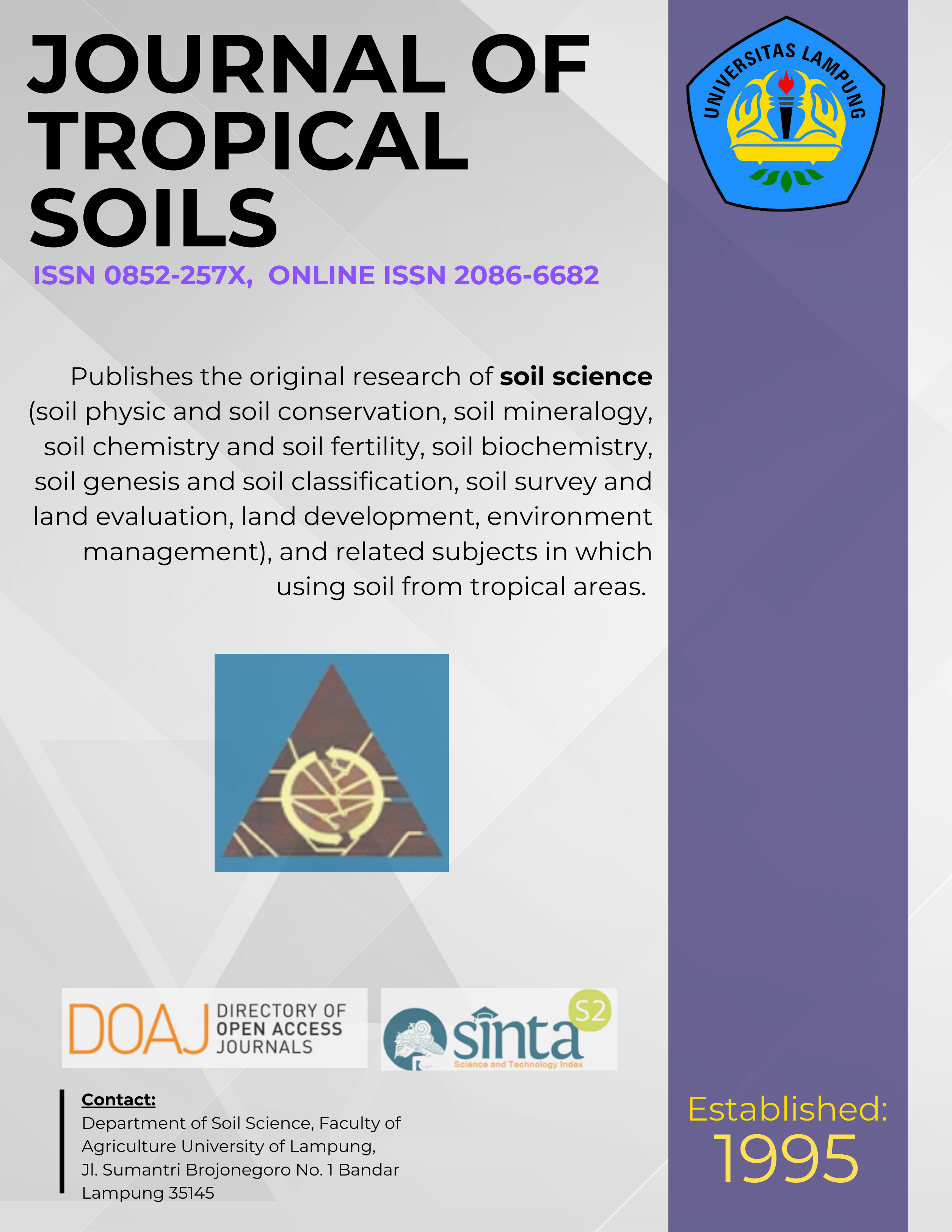Effect of Fertilization on the Growth and Biomass of Acacia mangium and Eucalyptus hybrid (E. grandis x E. pellita)
Main Article Content
Abstract
Effect of fertilization on the growth and biomass of Acacia mangium and Eucalyptus hybrid (E. grandis x E. pellita) on third rotation is still not well understood to support judicious application in large scale forest plantations. A field experiment aimed at understanding these questions was conducted in PT. Riau Andalan Pulp and Paper forest concession in Riau during 2011 to 2013. The experiment consisted of 2 trials based on species, each was arranged in a Randomized Completely Block Design with 5 replicates. Treatments for A. mangium were zero fertilizer, 23 and 70 kg P ha-1 and for E. hybrid zero fertilizer, 70 and 210 kg N ha-1. Biomass at 24 months was estimated using allometric equations with diameter at breast height (DBH) as predictor. Significant effects are: increased DBH and stand volume of both species and height of E. hybrid. Increased aboveground and root biomass, but decreased root:shoot ratio (R:S) of both species. There was no significant effect of luxury rates of P or N on all parameters in each species. Stem was the biomass component most increased by fertilization resulting in proportional changes in other components except bark. Fertilization increased total leaf area, leaf specific area and stem growth efficiency of both species. Luxury fertilizer rates reduced fertilizer efficiency in both species.
[How to Cite: Siregar STH, Wawan and Adiwirman. 2015. Effect of Fertilization on the Growth and Biomass of Acacia mangium and (E. grandis x E. pellita). J Trop Soils 20: 157-166. Doi: 10.5400/jts.2015.20.3.157]
Downloads
Article Details
License for Authors
Authors who publish with this journal agree to the following terms:
- Authors retain copyright and grant the journal right of first publication with the work simultaneously licensed under a Creative Commons Attribution License that allows others to share the work with an acknowledgement of the work's authorship and initial publication in this journal.
- Authors are able to enter into separate, additional contractual arrangements for the non-exclusive distribution of the journal's published version of the work (e.g., post it to an institutional repository or publish it in a book), with an acknowledgement of its initial publication in this journal.
- Authors are permitted and encouraged to post their work online (e.g., in institutional repositories or on their website) prior to and during the submission process, as it can lead to productive exchanges, as well as earlier and greater citation of published work (See The Effect of Open Access).
License for Regular Users
Other regular users who want to cite, distribute, remix, tweak, and build upon author’s works, even for commercial purposes, should acknowledge the work’s authorship and initial publication in this journal, licensed under a Creative Commons Attribution License.

